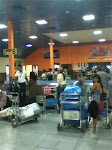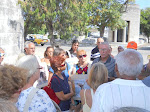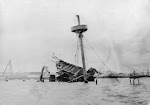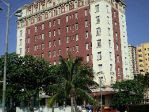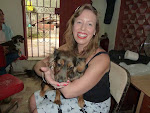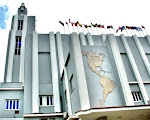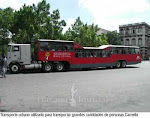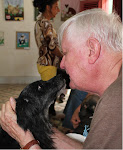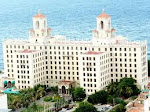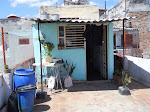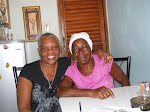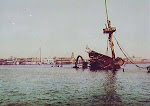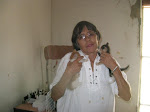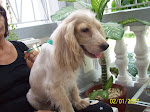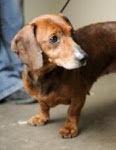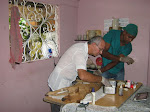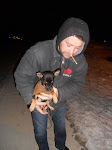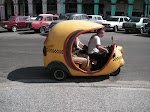Pissing Contests
A guy I used to work with told a story about Junior Finchley, one of his boyhood friends. His crowd would hold what they somewhat indelicately called pissing contests where the kids would line up along the curb and see how far each could urinate out into the street. Junior Kelly was their all time champion as he could urinate completely across Kipling Avenue, then a two lane road.
Junior had a slight malformation that constricted his urethral duct and acted like putting your thumb over the end of a running garden hose to water plants further away. For Junior his malady allowed him to propel his urine to almost incredible distances. Well, any doctor will tell you that such a condition can be dangerous, and most would advise a surgical correction. Thus Mr. and Mrs. Finchley had Junior fixed, and he lost his notoriety. After the surgery, Junior couldn't piss beyond the toes of his shoes.
Why do I tell you this? Well, I guess I'm trying to show that pissing contests expend time and energy, but prove nothing worth knowing. Cuba and the US have been in such a contest for more than 50 years, gaining neither side anything worth having and losing both sides much that is valuable. I'm not here to judge which side has won, is winning, or will win this useless waste of time and treasure.
To discuss this conflict, we might begin by examining the words each side uses to describe it. In Cuba, it isn't an "embargo," it's a "bloqueo" or a blockade. Webster says a blockade is a shutting of ports of a belligerent by its enemy--clearly an act of war. In the US, we call it an embargo which is defined as shutting your own ports to commerce with an opponent, certainly an act a little less belligerent than a blockade.
As my work in Cuba involves the plight of domestic companion animals, let's consider how Cuba's economic problems affect those animals. First most dogs and cats don't have collars or ID tags, and few are ever walked on leashes. Many city dwellers have no yards so dogs are let outside to relieve themselves. On the street, how do you tell which animals have homes and which are stray? My way to tell is the only way I've come up with, and it isn't very accurate--I look to see if his ribs are showing, telling me how well fed an animal is. When public dog catchers come through your neighborhood, they pretty well take the dogs they can catch because they have the same problems I have in telling family dogs from strays. Thus large numbers of family dogs disappear each year into a killing machine designed to avoid shocking tourists with sick, dying, or dead animals on the streets.
I say this tragedy is caused by the embargo or blockade or whatever you want to call it. Surely Cubans love their dogs, but their standard of living, beaten down by privations imposed on Cuba, leaves no room for the cost of collars and tags. And consider this: Nowhere in Cuba can you get your dog microchipped. This, the best way of identifying domestic animals, is completely unavailable in an economy that has a hard enough time feeding its humans, much less its pets.
And speaking of feeding your animals, how does Fido get enough to eat in Cuba? For the most part he gets scraps and leftovers from his master's table. The average Cuban, paid in old Cuban Pesos (or Moneda Nacional) cannot buy the small amount of pet food Cuba imports which is sold only in CUC's (pronounced "kooks"), a money system pretty well restricted to tourist use. Thus you may find a few places which sell pet food, but it's priced in money the average Cuban citizens don't have and can't earn.
And what about vet care? Cuba, with its good educational system, educates many veterinarians each year, but remember, this is a Communist economy, and these vets are schooled to become public employees like meat inspectors, agricultural managers, and airport officials. If a vet offers his or her services to treat domestic pets, it's usually as a part-time sideline run out of his garage for his neighbors. His day job has nothing to do with companion animals.
The point of all this is that Cuba could be a better home for family animals if it weren't so stressed by the embargo. How could there be a more innocent group of beings hurt by a failed political policy? And if we see signs of suffering among the animals of Cuba, think of how the man in the street must be suffering too.
These family critters are in our world to make life better for people. Both sides in this pissing contest between neighboring nations should admit it is a failure hurting the wrong victims and go about creating a better world for people and their animals.
Les Inglis
Sunday, October 30, 2011
Sunday, October 23, 2011
The Malecon
The Malecon
From the entrance to Havana's harbor west to the Almendares River, Havana is bordered on the north by the Florida Straits. In the early 1900's when US influence in Cuba was at an all time high, a six-lane curving artery was constructed with American engineering help along the sea, and it eventually became known as El Malecón. Today it is the best known and most traveled street in Havana.
Both sides of the Malecon have wide sidewalks, and the north side also has a wide, four- foot high barrier to keep cars from the sea and the sea from the road. I doubt if any cars fell into the sea, but on windy, wavy days, the sea splashes high in the air and the wind blows the water onto the roadway. When wind direction and wave action are just right, the road receives so much splashed water that traffic is stopped and moved onto other streets.
On the sea side of the barrier is a drop of perhaps 20 feet to the water level, where large rocks are placed to take most of the constant beating the sea tries to inflict on the land. On normal calm days, the waves are small and the kids and some adults climb down onto the rocks to swim and fish. At night, young couples stroll along the sidewalk or sit on the barrier and talk about whatever young couples talk about.
Havana is a very old city, and traveling its narrow streets is and slow for the most part. If you want to go from one section (say Vedado on the west) to Old Havana on the east, most taxi drivers will first run downhill to the Malecon and then run along the water on the Malecon between city sections. It's a little further, but faster to use the Malecon.
When the sun sets, lights come on in the multi-story buildings along the Malecon. As darkness overtakes the city, you lose sight of the deterioration and lack of paint of many buildings and see only their shapes because of their lighted windows. It's really a beautiful picture, done in pointillism, and Havana takes on a nocturnal charm as you gaze along the curving Malecon.
Havana probably has as many dog lovers proportionally as any other large city. You see them walking their dogs in the parks, on the parkways in the middle of boulevards, and, to some extent, on the Malecon. I worry when I see them there as the cars go really fast. One false move and a dog wouldn't stand a chance. Fortunately Havana's dogs cultivate a respect for cars at an early age. Years ago we adopted a stray beagle who came, hungry and lonely, to our farm. We named her Annie, and we knew she had walked the country roads near our house for a long time. Every time she heard the sound of an approaching car, she immediately made a 90 degree turn and walked at right angles to the road, returning only after the car had passed. I didn't teach her this, she learned it herself before she found us. I think the city dogs of Havana, both those human guardians and those without homes, develop that "street smart" ability, and it's a good thing they do.
I often walk from my hotel to the Malecon when I'm in Havana--it's only a couple of blocks. One Saturday morning, my walk coincided with the Havana Marathon, held yearly on the Malecon.
I made it to the sea side of the street and boosted myself up to sit on the barrier and watch the runners. As hundreds passed by--most of them trotting, some running, and some walking-- I was happy to see a number of the marathoners had their dogs with them. With the street closed to vehicles, for the runners and their dogs it was a rare opportunity to experience the Malecon right out there in the middle where man and beast would otherwise be dodging cars and trying to get back to the sidewalk.
Another note on crossing streets: In Havana drivers have a different idea of their right of way. They scan the road ahead, and if any pedestrians seem to be threatened, they tap their horn, in effect commanding the right of way for themselves. Some even honk and then step on the gas. People, like dogs, learn to respect those little horn taps. To fail to do so might make a short toot on a car horn one of the last sounds you'll ever hear.
Les Inglis
From the entrance to Havana's harbor west to the Almendares River, Havana is bordered on the north by the Florida Straits. In the early 1900's when US influence in Cuba was at an all time high, a six-lane curving artery was constructed with American engineering help along the sea, and it eventually became known as El Malecón. Today it is the best known and most traveled street in Havana.
Both sides of the Malecon have wide sidewalks, and the north side also has a wide, four- foot high barrier to keep cars from the sea and the sea from the road. I doubt if any cars fell into the sea, but on windy, wavy days, the sea splashes high in the air and the wind blows the water onto the roadway. When wind direction and wave action are just right, the road receives so much splashed water that traffic is stopped and moved onto other streets.
On the sea side of the barrier is a drop of perhaps 20 feet to the water level, where large rocks are placed to take most of the constant beating the sea tries to inflict on the land. On normal calm days, the waves are small and the kids and some adults climb down onto the rocks to swim and fish. At night, young couples stroll along the sidewalk or sit on the barrier and talk about whatever young couples talk about.
Havana is a very old city, and traveling its narrow streets is and slow for the most part. If you want to go from one section (say Vedado on the west) to Old Havana on the east, most taxi drivers will first run downhill to the Malecon and then run along the water on the Malecon between city sections. It's a little further, but faster to use the Malecon.
When the sun sets, lights come on in the multi-story buildings along the Malecon. As darkness overtakes the city, you lose sight of the deterioration and lack of paint of many buildings and see only their shapes because of their lighted windows. It's really a beautiful picture, done in pointillism, and Havana takes on a nocturnal charm as you gaze along the curving Malecon.
Havana probably has as many dog lovers proportionally as any other large city. You see them walking their dogs in the parks, on the parkways in the middle of boulevards, and, to some extent, on the Malecon. I worry when I see them there as the cars go really fast. One false move and a dog wouldn't stand a chance. Fortunately Havana's dogs cultivate a respect for cars at an early age. Years ago we adopted a stray beagle who came, hungry and lonely, to our farm. We named her Annie, and we knew she had walked the country roads near our house for a long time. Every time she heard the sound of an approaching car, she immediately made a 90 degree turn and walked at right angles to the road, returning only after the car had passed. I didn't teach her this, she learned it herself before she found us. I think the city dogs of Havana, both those human guardians and those without homes, develop that "street smart" ability, and it's a good thing they do.
I often walk from my hotel to the Malecon when I'm in Havana--it's only a couple of blocks. One Saturday morning, my walk coincided with the Havana Marathon, held yearly on the Malecon.
I made it to the sea side of the street and boosted myself up to sit on the barrier and watch the runners. As hundreds passed by--most of them trotting, some running, and some walking-- I was happy to see a number of the marathoners had their dogs with them. With the street closed to vehicles, for the runners and their dogs it was a rare opportunity to experience the Malecon right out there in the middle where man and beast would otherwise be dodging cars and trying to get back to the sidewalk.
Another note on crossing streets: In Havana drivers have a different idea of their right of way. They scan the road ahead, and if any pedestrians seem to be threatened, they tap their horn, in effect commanding the right of way for themselves. Some even honk and then step on the gas. People, like dogs, learn to respect those little horn taps. To fail to do so might make a short toot on a car horn one of the last sounds you'll ever hear.
Les Inglis
Saturday, October 15, 2011
Hotel Nacional
Hotel Nacional
In 1929 Cuba completed its own Capitol building, which looks like the US Capitol. A tall dome, a huge, wide stairway cascading from the main floor to the street level, and legislative chambers at each end of a wide colonnaded Greek Revival monument were all features familiar to Americans visiting Havana.
Yet, even though its similarities to our Capitol are somehow flattering to Americans, my own favorite American style building is another iconic Havana landmark, the Hotel Nacional. Built two years later than the Capitolio, the Hotel Nacional is the end of the line for Henry Flagler's East Coast Railroad.
This hotel gets my nomination as the most iconic American structure in Havana. One big reason is the hotel lives on today as it was originally intended--a luxury hotel for tourists and business people. The Capitolio fails this test as Cuba has no need for a bicameral, democratic legislature. The place has become an fine art gallery, the sight of important meetings, and a target for thousands of digital cameras in the hands of Cuba's endless stream of visitors.
But the hotel wins my top iconic structure award for other reasons too. Flagler was a pioneer trying to connect up many populations along the Atlantic. But that connection didn't stop at Miami, the last big mainland city. Starting in 1905, Flagler pushed on another 160 miles to Key West, building railroad bridges from key to key, so the final American station was Key West. Still not satisfied, he offered a ferry service from Key West to Havana. You could step off your train in Key West, walk across a wide platform, and board a ferry to Havana.
Henry seemed to accept no limitations for the enterprise he was building. He established hotels at each city he served. In 1921, the Casa Marina Hotel in Key West opened, and ten years later the Hotel Nacional in Havana opened for Cuba-bound tourists. So this hotel, a twin sister to Flagler's Breakers Hotel in Palm Beach, is representative of American free enterprise, a conglomerate, and a crowning symbol of a robber baron's dreams brought to fruition. Also, as all three hotels I have mentioned are still operating as hotels, it is a testament to Flagler's savvy as a business person. We have many such examples in the US (Rockefeller Center, Carnegie Libraries, and Ford Museums to name a few) while Cuba has relatively few.
In 2006 on my second trip to Cuba, I was talked into staying a week at the Hotel Nacional. A friend, part of our traveling party, who had been to Cuba many times also insisted we stay on the 6th (executive) floor where you "get VIP treatment." I had been perfectly happy at the Hotel Presidente, a much less ritzy place, but very comfortable and convenient on my previous and subsequent trips. But now I'm glad that at least I had a taste of the Nacional.
You arrive at the Nacional through a long drive lined with new black cars waiting to whisk you all over Havana. None of these cars for hire are the old 50's era American cars. Those were nowhere to be found near the Nacional.
Inside, the main reception hall runs the entire width of the building, and crowds gather around the several clerks waiting to serve them, but when an attendant learned we had reservations on the sixth floor, we were steered around the crowds to an elevator and up to a concierge style desk where any hotel service could be had. One signature on a form already filled out for me was all I needed to be led to my very comfortable room.
The rest of my stay there was filled with people anxious to make my stay a pleasure--get tickets for a show, directions to wherever you're going, and where to buy this and that. First thing in the morning, a huge table in the sitting area near our private reception area strained under the weight of platter after elaborate platter of delicious breakfast choices--tropical fruits, beans and rice, hash browns, eggs, fish, cereals--you name it, it was on the buffet.
One floor below the huge main reception hall are meeting rooms, shops, and a couple of restaurants, one a cafeteria affair with silver service prices. If you cross the main reception hall from the front door, you pass through doors and outside to a wonderful covered cocktail lounge area with easy chairs, sofas, strolling musicians, or stationary musical groups playing the old Cuban standards of the pre-revolution days so familiar to the tourists. Songs like Siboney, Green Eyes, Bésame Mucho, and Guantamera. If you don't do anything else in Cuba, you have to sit in that outdoor area in the cool of the evening, drink a mojito, and listen to the great music. All this with a view of the Florida Straits and Miami's lights a faint glow on the horizon.
Just as you don't see any of the old 50's cars near the hotel, you don't see any stray dogs nearby either. I suppose the hotel area gets extra scrutiny from the city's dog catchers who capture luckless dogs and cats and hold them away from tourists' eyes for a rabies quarantine period before killing them. It's hard to think of those poor little souls when you don't see them and you're being pampered to within an inch of your life. But once in a while I had to think of them--after all, they were the reason we went to Cuba.
I won't stay at the Nacional again. My regular hotel, the Presidente, is cheaper (about half the price), sufficient to my needs, and a little better located for me. But, I'll always have pleasant memories of my stay at the Nacional, especially after it's having won my Iconic American Structure Award,.
Les Inglis
In 1929 Cuba completed its own Capitol building, which looks like the US Capitol. A tall dome, a huge, wide stairway cascading from the main floor to the street level, and legislative chambers at each end of a wide colonnaded Greek Revival monument were all features familiar to Americans visiting Havana.
Yet, even though its similarities to our Capitol are somehow flattering to Americans, my own favorite American style building is another iconic Havana landmark, the Hotel Nacional. Built two years later than the Capitolio, the Hotel Nacional is the end of the line for Henry Flagler's East Coast Railroad.
This hotel gets my nomination as the most iconic American structure in Havana. One big reason is the hotel lives on today as it was originally intended--a luxury hotel for tourists and business people. The Capitolio fails this test as Cuba has no need for a bicameral, democratic legislature. The place has become an fine art gallery, the sight of important meetings, and a target for thousands of digital cameras in the hands of Cuba's endless stream of visitors.
But the hotel wins my top iconic structure award for other reasons too. Flagler was a pioneer trying to connect up many populations along the Atlantic. But that connection didn't stop at Miami, the last big mainland city. Starting in 1905, Flagler pushed on another 160 miles to Key West, building railroad bridges from key to key, so the final American station was Key West. Still not satisfied, he offered a ferry service from Key West to Havana. You could step off your train in Key West, walk across a wide platform, and board a ferry to Havana.
Henry seemed to accept no limitations for the enterprise he was building. He established hotels at each city he served. In 1921, the Casa Marina Hotel in Key West opened, and ten years later the Hotel Nacional in Havana opened for Cuba-bound tourists. So this hotel, a twin sister to Flagler's Breakers Hotel in Palm Beach, is representative of American free enterprise, a conglomerate, and a crowning symbol of a robber baron's dreams brought to fruition. Also, as all three hotels I have mentioned are still operating as hotels, it is a testament to Flagler's savvy as a business person. We have many such examples in the US (Rockefeller Center, Carnegie Libraries, and Ford Museums to name a few) while Cuba has relatively few.
In 2006 on my second trip to Cuba, I was talked into staying a week at the Hotel Nacional. A friend, part of our traveling party, who had been to Cuba many times also insisted we stay on the 6th (executive) floor where you "get VIP treatment." I had been perfectly happy at the Hotel Presidente, a much less ritzy place, but very comfortable and convenient on my previous and subsequent trips. But now I'm glad that at least I had a taste of the Nacional.
You arrive at the Nacional through a long drive lined with new black cars waiting to whisk you all over Havana. None of these cars for hire are the old 50's era American cars. Those were nowhere to be found near the Nacional.
Inside, the main reception hall runs the entire width of the building, and crowds gather around the several clerks waiting to serve them, but when an attendant learned we had reservations on the sixth floor, we were steered around the crowds to an elevator and up to a concierge style desk where any hotel service could be had. One signature on a form already filled out for me was all I needed to be led to my very comfortable room.
The rest of my stay there was filled with people anxious to make my stay a pleasure--get tickets for a show, directions to wherever you're going, and where to buy this and that. First thing in the morning, a huge table in the sitting area near our private reception area strained under the weight of platter after elaborate platter of delicious breakfast choices--tropical fruits, beans and rice, hash browns, eggs, fish, cereals--you name it, it was on the buffet.
One floor below the huge main reception hall are meeting rooms, shops, and a couple of restaurants, one a cafeteria affair with silver service prices. If you cross the main reception hall from the front door, you pass through doors and outside to a wonderful covered cocktail lounge area with easy chairs, sofas, strolling musicians, or stationary musical groups playing the old Cuban standards of the pre-revolution days so familiar to the tourists. Songs like Siboney, Green Eyes, Bésame Mucho, and Guantamera. If you don't do anything else in Cuba, you have to sit in that outdoor area in the cool of the evening, drink a mojito, and listen to the great music. All this with a view of the Florida Straits and Miami's lights a faint glow on the horizon.
Just as you don't see any of the old 50's cars near the hotel, you don't see any stray dogs nearby either. I suppose the hotel area gets extra scrutiny from the city's dog catchers who capture luckless dogs and cats and hold them away from tourists' eyes for a rabies quarantine period before killing them. It's hard to think of those poor little souls when you don't see them and you're being pampered to within an inch of your life. But once in a while I had to think of them--after all, they were the reason we went to Cuba.
I won't stay at the Nacional again. My regular hotel, the Presidente, is cheaper (about half the price), sufficient to my needs, and a little better located for me. But, I'll always have pleasant memories of my stay at the Nacional, especially after it's having won my Iconic American Structure Award,.
Les Inglis
Friday, October 7, 2011
Symbiosis
Symbiosis
It's been a few thousand years since the first wolves lost their fear of humans and began to hang around human campsites and evolve into dogs. Humans and dogs are two highly intelligent species who quickly realized they had something to offer each other, and they began to develop a symbiotic relationship. The dogs helped with hunting and security, and the humans made finding food much easier for the dogs. And they became so very devoted to each other.
Much as I try to discourage tourists from trying to adopt strays from Cuba (it just isn't very practical), there is almost an uncontrollable demand for finding, vetting, and shipping Cuban homeless dogs to other countries. I guess that demand is fueled by the interdependence of the two species and a resulting mutual love. Getting a dog through a visit to a local shelter is easier, cheaper, less risky, and offers more choice. But people come back home from Cuba with a sympathetic ache in their hearts for that little ownerless dog who hung around the tropical resort where they spent their vacation.
Any dog owner has to know that love, that devotion, and that mutual attachment. As I sit here writing in my study, I face on the opposite wall 9 pictures hanging of my dogs. And that gallery doesn't include two pictures of recent family dogs yet to be framed. The first was Annie, a Beagle who took my heart in no time flat. She would climb into my lap as I settled in to watch some TV, and if I didn't move all evening, she wouldn't either. We couldn't talk with each other but we surely communicated those wonderful evenings. Boy, a handsome German Shepherd, is up there too. He lived in a fenced 2 acre yard at our farm, and he had a heated dog house. But if we were outside the house, he was always with us. I often sat on the top porch stair with him sitting next to me--my arm around his big strong body. We were communicating too.
I know what those tourists feel when they see the sweet little resort hangers-on. It's like love at first sight, and it can change your life in an instant. It's like a mother's love for her child or a musician's involvement with his music, or an artist's connection with his work.
One of the drawbacks to having dogs and cats as pets is they don't last forever. Sooner or later you have to say goodbye to them. We've done that many times, and it's never easy. But even those goodbyes don't sever the connection. Annie, Boy, Yo-yo, recipients and givers of so much love are here with me today, even years after our last goodbyes.
All in all, it's an experience worth having. I know that if I always have at least one such companion in my life, I cannot feel lonely or unloved.
Les Inglis
It's been a few thousand years since the first wolves lost their fear of humans and began to hang around human campsites and evolve into dogs. Humans and dogs are two highly intelligent species who quickly realized they had something to offer each other, and they began to develop a symbiotic relationship. The dogs helped with hunting and security, and the humans made finding food much easier for the dogs. And they became so very devoted to each other.
Much as I try to discourage tourists from trying to adopt strays from Cuba (it just isn't very practical), there is almost an uncontrollable demand for finding, vetting, and shipping Cuban homeless dogs to other countries. I guess that demand is fueled by the interdependence of the two species and a resulting mutual love. Getting a dog through a visit to a local shelter is easier, cheaper, less risky, and offers more choice. But people come back home from Cuba with a sympathetic ache in their hearts for that little ownerless dog who hung around the tropical resort where they spent their vacation.
Any dog owner has to know that love, that devotion, and that mutual attachment. As I sit here writing in my study, I face on the opposite wall 9 pictures hanging of my dogs. And that gallery doesn't include two pictures of recent family dogs yet to be framed. The first was Annie, a Beagle who took my heart in no time flat. She would climb into my lap as I settled in to watch some TV, and if I didn't move all evening, she wouldn't either. We couldn't talk with each other but we surely communicated those wonderful evenings. Boy, a handsome German Shepherd, is up there too. He lived in a fenced 2 acre yard at our farm, and he had a heated dog house. But if we were outside the house, he was always with us. I often sat on the top porch stair with him sitting next to me--my arm around his big strong body. We were communicating too.
I know what those tourists feel when they see the sweet little resort hangers-on. It's like love at first sight, and it can change your life in an instant. It's like a mother's love for her child or a musician's involvement with his music, or an artist's connection with his work.
One of the drawbacks to having dogs and cats as pets is they don't last forever. Sooner or later you have to say goodbye to them. We've done that many times, and it's never easy. But even those goodbyes don't sever the connection. Annie, Boy, Yo-yo, recipients and givers of so much love are here with me today, even years after our last goodbyes.
All in all, it's an experience worth having. I know that if I always have at least one such companion in my life, I cannot feel lonely or unloved.
Les Inglis
Subscribe to:
Posts (Atom)
